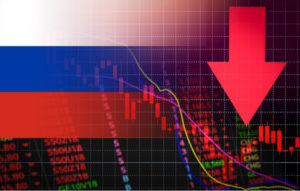
The rapid pace of changing events in Ukraine, and the economic responses to Russian aggression by countries around the world, are causing increased volatility in markets that were already unstable thanks to inflation and shortages. The WSJ reports, “Under the stock market’s surface, the turmoil is more apparent. Around 67% of stocks in the Nasdaq and 29% of stocks in the S&P 500 are down at least 20% from their highs, according to Dow Jones Market Data.”
Gunjan Banerji writes in the WSJ:
Global markets for everything from stocks to oil to wheat are recording some of the most extreme price swings in decades, a sign of investor unease over unpredictable economic and political dynamics.
After months of turmoil driven by the prospect of tighter Federal Reserve policy, investors this past week confronted a fresh challenge when Russia invaded Ukraine. The geopolitical crisis threatens to crimp economic growth in Europe at a time when inflation is at a 40-year high and the Fed is poised to raise interest rates for the first time since 2018.
The S&P 500 suffered its first correction—a drop of more than 10% from a recent high—in two years, while Russian stocks recorded a historic crash, dropping by a third. Oil prices crossed $100 for the first time since 2014, and wheat hit the highest level since 2012. Commodities like nickel and aluminum soared as well.
The attack is “creating chaos in the financial markets,” said Ilya Feygin, a managing director at New York-based brokerage firm WallachBeth Capital.
Yet as U.S. stock indexes touched their lows of the week Thursday morning, a familiar pattern began to reassert itself. Many investors jumped back into the market, scooping up shares of the growth and speculative stocks that fell out of favor this year. Oil and other commodity prices eased off their highs. By the time Friday’s closing bell rang, the technology-focused Nasdaq Composite and the broader S&P 500 were up for the week.
The S&P 500 eked out a 0.8% gain after falling as much as 5.4% during the week, the biggest weekly comeback since September 2008.
The U-turn emphasizes that many investors are loath to dump the trades that boomed over the past two years, and it highlights a dilemma they now face. They can opt to stick with investments in slower-growing companies that appear likely to weather what could be a bruising interest-rate cycle. Or, they can return to the pandemic-era winners whose returns exceeded all expectations and that continue to prosper at times, despite concerns about high valuations and mixed fundamentals.
Even in light of the impressive comeback in the second half of the week, some stark facts remain. The Nasdaq is down 12% in 2022; the S&P 500 is off 8%. Investors continue to expect the Fed to raise rates starting in March—a process that is likely to be painful for some highly valued investments. This week, investors will be looking at the monthly jobs report and earnings from companies like BJs Wholesale Club Holdings Inc. and Domino’s Pizza Inc. to gauge the market’s trajectory.
Action Line: Understand the carnage taking place in the market and how brutal markets can be. If you need help building a portfolio with volatility in mind, I would love to talk with you. If you would like to get to know me before we talk on the phone, there’s no better way than signing up for my free monthly Survive & Thrive letter. In the letter each month, I encourage and push you to achieve the personal and financial security goals you’ve set for your family. Click here to subscribe. We’ll get to know each other, and get serious about your future success.



